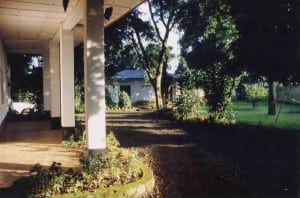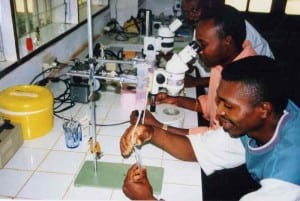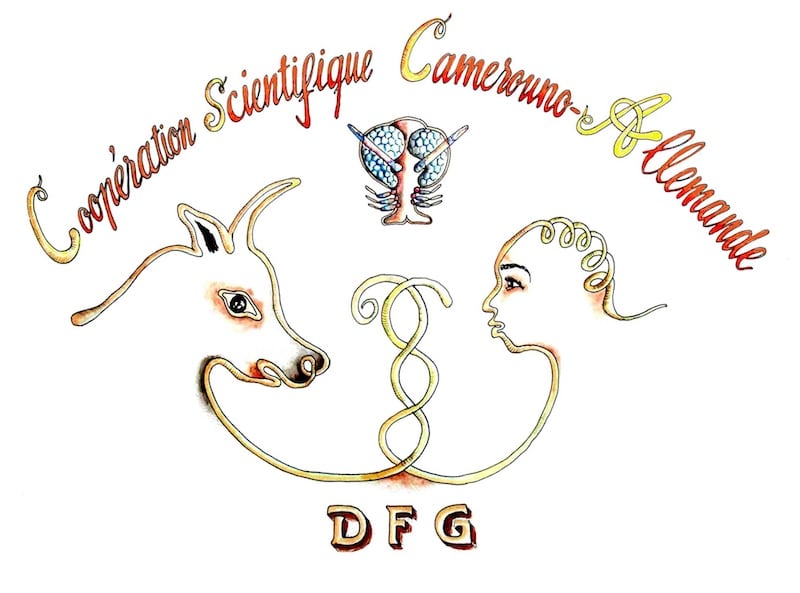Key Facts
Funded by the Deutsche Forschungsgemeinschaft (German Research Foundation)
Our research network is based on more than 40 years of successful partnership of research institutes in Germany and our partners based in Cameroon.
Headed by Dr. Alfons Renz of the Institute for Evolution and Ecology at the University of Tübingen.
What is Onchocercoses?
Onchocerciasis is also known as river blindness because the blackfly which transmits the disease breeds in rivers; it often blinds people, as well as causing debilitating skin disease. Over 37 million people have been infected (source WHO), often affecting those living in poor, rural African communities. There is currently no official data about the levels of blindness in Cameroon, but it is estimated that about 1% of the population are blind (Sightsavers International), with the principal causes being cataract, river blindness, corneal scarring and refractive error. Ivermectin-mass treatments have been used to cure onchocerciasis and has been available for the past 15-20 years to the villages in our study area. As the life-expectancy of adult Onchocerca volvulus is about 10 to 15 years, it is expected that the endemicity of human onchocerciasis has now dropped to lower levels of endemicity.
Logo designed by the Cameroonian artist Issek and A. Renz
Planned projects
Successful control of human onchocerciasis by mass-distribution of ivermectin (APOC) depends largely of two factors: The implication of additional control measures – i.e. strategies to reduce man-fly-parasite contact in the field, which we aim to assess quantitatively – and the speed of development of resistance against ivermectin, i.e. from yet unknown characteristics of the population biology of Onchocerca worms: mating behaviour, microfilarial production and turnover, which we propose to study in the bovine O. ochengi model. Premunition by cross-transmission of animal filariae, zooprophylaxis and ivermectin-facilitated immunity additionally influence the epidemiology of O. volvulus, but their beneficial effects vary according to local micro-epidemiological conditions
Facilities


The program has research facilities on its own compound, including a house with kitchen facilities, a large parlour, a small office and two bedrooms, each with its own bathroom for resident scientists.
There are three store rooms which provide ample space for lab equipment, cattle food et.c. The supply of water and electricity is reliable.
Social Media
We recently started a facebook page. Please follow us online and share our research.


